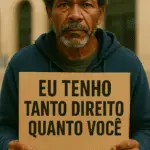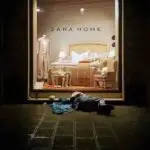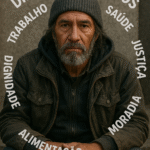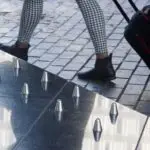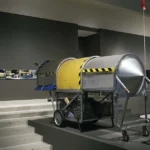In global metropolises, every renovated square, every gleaming museum and every refurbished façade often conceals more than it reveals. Beyond the smooth concrete and controlled aesthetics, there is an urban project that determines who deserves the space and who should be swept from the visual panorama.
But what if art had the ability to do the opposite? Make evident what the city tries to hide? This is exactly what Polish artist and designer Krzysztof Wodiczko does with his "critical vehicles", particularly the Homeless Vehicle Project.
Wodiczko is an unusual artist. He was born in 1943, has crossed borders and regimes, lived in Poland, France, Canada and the United States, and describes himself as a nomad.
However, an attentive traveller: "They need to have a good knowledge of the terrain in which they find themselves." "Often better than local residents," he says, referring to displaced people in urban areas.
The artist Krzysztof Wodiczko and the transformation of the urban environment from the perspective of the homeless.
Since the 1980s, Wodiczko has dedicated himself to creating artistic interventions in the urban environment, giving a voice to those who have been silenced: migrants, homeless people and refugees. Instead of paintings in museums, he uses statues, building façades and even trolleys as a means of provocation.
The municipality as a showcase
The artist begins by criticising what he calls "single urban thinking": a city designed to attract investors, not its residents. According to researchers such as David Harvey, Saskia Sassen and Manuel Castells, the global city has become a stage for economic flows and consumption, where the less favoured become "urban noise". In this scenario, art is often used to make up and promote peace.
However, this does not apply to Wodiczko's case.
"Epic architectural theatre"
During the 1980s, the artist began projecting grandiose images onto public buildings in the midst of intense political unrest. The projection of a swastika on South Africa House in London, during anti-apartheid demonstrations, is one of the best-remembered examples. This is what he calls a "symbolic attack": the silent façade is used to reveal the history that the building is trying to hide.
The gesture, as well as provoking, has a pedagogical character. According to the philosopher Walter Benjamin, every work of art is simultaneously a record of barbarism.
In 1986, in New York City, the artist made his move. During the renovations that promised to "revitalise" Union Square 1He projected photographs of homeless people onto statues of Abraham Lincoln, George Washington and Lafayette. The city wanted to hide the homeless. Wodiczko placed them in a prominent position.
Rosalyn Deutsche, an urban art critic, saw the work as a direct response to the architecture of exclusion. It didn't just criticise. The aim was to restore the primary function of public space: to be a place of conflict, presence and expression.
Homeless Vehicle Project
In 1988, Wodiczko presented his most striking work: the Homeless Vehicle Project. It looked like a simple urban architecture project, but it was a critique of the efficient city. A carefully designed trolley that included shelter, a place to store waste, a room for personal hygiene and a space to sleep.
Visually, it resembled a shopping trolley and a war machine. Inspired by the Bauhaus, it wasn't just a sculpture: it was a survival tool and a communication channel. The car was shown at biennial exhibitions, but also trialled on the streets with homeless people.
As well as providing shelter, the trolley also stimulated conversations. People approached, curious about the subject. And the homeless spoke. They became noticeable. They asked for attention.
Fighting urban disappearance
The metropolises promoted as global, with their vast parks, museums financed by financial institutions and cultural centres built by construction companies, are also places of exclusion. Those who don't buy don't exist. The "unwanted" are removed from the images of tourist brochures and development plans.
In this context, the Homeless Vehicle Project is a work of art engaged with the heart of contemporary capitalism. An artwork that goes beyond the "beautiful", seeking the "visible". What beauty does abandonment possess?
Art has the potential to be a right
Wodiczko's work also clarifies the question that many people ask: art for whom? He gives marginalised people back the symbolic agency that elitist urbanism tries to erase.
From the artist's perspective, his "vehicles" are merely instruments of change. The goal is that, in the future, no-one will need them. But until then, we must fight architecture using the weapons of image, word and presence.
What lessons can we learn from Wodiczko's work?
- That the city is not impartial: it is a space of conflicting meanings.
- That art has the power and responsibility to question who has the right to urban space.
- Publicising is the first step towards recognising rights.
- That the projection of an image on a building has the power to transform more than any advertising billboard.
Solidaritas argues that access to rights can also be realised through images, provocations and critical discourse. It is impossible to think about citizenship without confronting the places where it is constantly denied.
If the city persists in pretending that the homeless population doesn't exist, let more cars come. We hope for more projections. We hope for more art with a voice.
Photo caption: Krzysztof Wodiczko's Homeless Vehicle Project: critical art in motion on the streets of New York. A provocation to the city that seeks to hide those who need visibility the most.
Find out more: Is engaged art possible in late capitalism? The 'critical vehicles' of Krzysztof Wodiczko / Medium
- Union Square is a famous square in the south of Manhattan in New York, known for being a place for meetings, protests, fairs and cultural events. It is a historic public space, surrounded by shops, underground stations and lots of urban movement.[↩]


